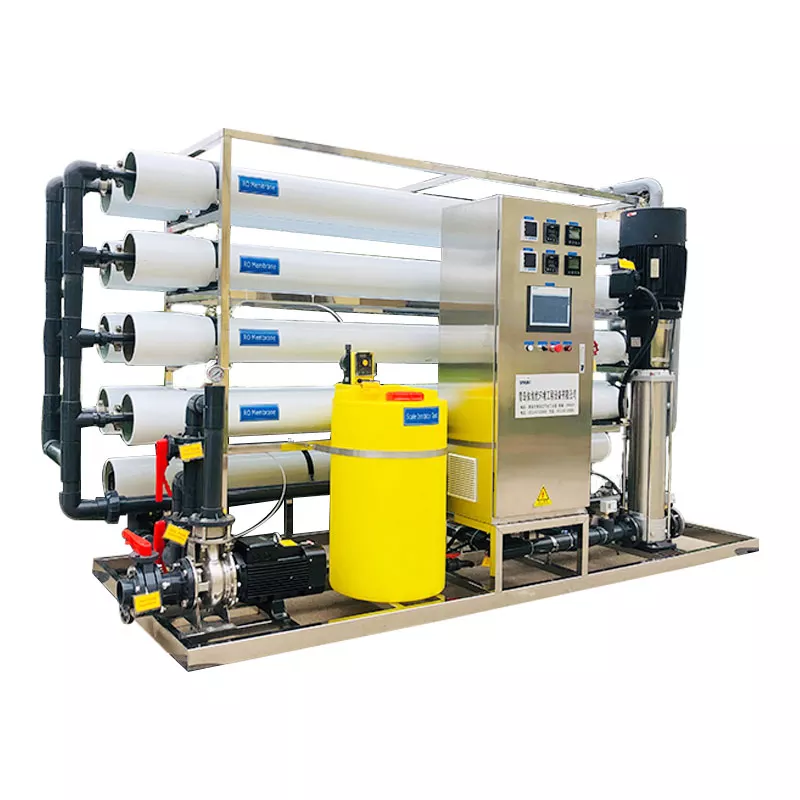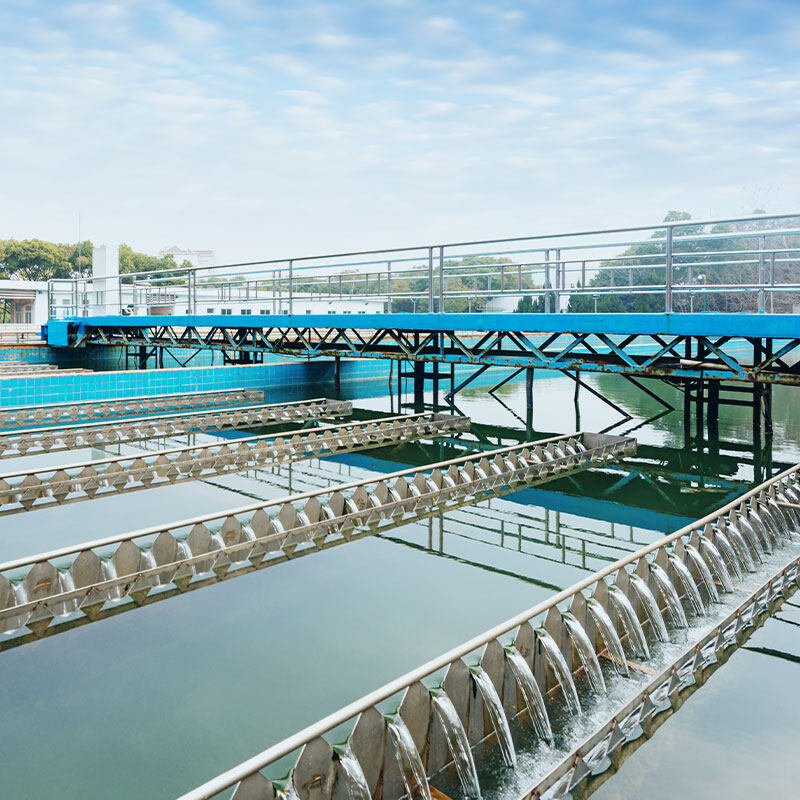Introduction to Reverse Osmosis Desalination System
Reverse osmosis is the most advanced and energy efficient membrane separation technology available today. Its principle is to separate these substances and water under a higher osmotic pressure than the solution, based on the fact that other substances cannot pass through the semi-permeable membrane. Reverse osmosis technology is commonly used for fresh water from seawater and brackish water.

The principle of reverse osmosis desalination technology
Reverse osmosis seawater desalination (SWRO) is a desalination technology developed in the 1970s that uses the selective permeability of membranes to separate salt water. This technology accounts for more than 45% of the international desalination technology application market and is the mainstream technology for seawater desalination.
The principle of reverse osmosis desalination is to pressurize seawater to flow along the membrane surface of a semi-permeable membrane. Water molecules in the seawater are driven by high pressure to overcome the osmotic pressure of the membrane and enter the freshwater flow channel through the semi-permeable membrane to collect into freshwater, while various salt ions blocked by the semi-permeable membrane remain in the seawater and become concentrated seawater to collect and discharge from the concentrated water flow channel.
The key components of reverse osmosis desalination include RO membrane modules, pressure housings, energy recovery devices, and high pressure pumps. With the advancement of technology and the renewal of key equipment, the system desalination rate of SWRO is up to about 99.5%, the energy consumption of the body is less than 3kWh/m3 fresh water, and the total energy consumption is around 4kWh/m3 fresh water. The technical competitiveness of SWRO continues to grow and has become one of the cheaper methods of using seawater to produce fresh water for drinking.
Some features of the reverse osmosis desalination system
- Reverse osmosis seawater desalination device has a compact structure, small volume and simple installation.
- Seawater desalination treatment equipment operation and maintenance are convenient, cleaning and maintenance without disassembly, and easy to manage.
- Seawater desalination system on the inlet water temperature requirements are not high, as long as any room temperature seawater from 5 ℃ to 45 ℃ can be desalinated, and marine equipment are generally equipped with a small power, the host and sub-machine work.
Some advantages of the reverse osmosis desalination system
- Reverse osmosis desalination equipment uses reverse osmosis water treatment equipment separation technology to desalinate seawater. This technology is so far recognized as the advanced desalination technology.
- The reverse osmosis desalination equipment is produced in strict accordance with CBT3751-1995 marine industry standards and can be used reliably under complex marine navigation conditions according to the requirements of CCS marine equipment.
- It can be designed according to the specificity of user requirements, it has the advantages of small volume, lightweight, convenient occupation, easy installation, and strong adaptability. It can be installed in a narrow cabin, deck, ship's room, passage, and other spaces. The rack piping and fittings are made of 316 (high pressure) stainless steel and anti-corrosion PPR material (low pressure).
- The pre-treatment unit adopts multi-valve technology to avoid frequent cleaning and environmental pollution.
- The reverse osmosis desalination equipment is simple to operate and easy to maintain.
- When electricity is available, fresh water can be provided immediately after start-up.
Wide application of seawater desalination system
The reverse osmosis seawater desalination device first extracts seawater for preliminary treatment, reduces the turbidity of seawater, stops the growth of bacteria, algae, and other microorganisms, and pressurizes the seawater with a special high-pressure pump to make it enter the reverse osmosis membrane. Seawater has a high salt content and seawater reverse osmosis membranes should have high desalination rates, corrosion resistance, high pressure, and pollution prevention. Seawater treated by reverse osmosis membranes. The desalinated water quality is much better than tap water and can be used for industry, commerce, residents, ships, and naval vessels.
Desalination is the use of seawater desalination to produce fresh water. It is an open-source incremental technology to achieve water use, which increases the total amount of fresh water, is not affected by time and climate, has good water quality, is increasingly reasonably priced, and ensures a stable water supply for coastal residents such as drinking water and industrial boiler water supply. The process of obtaining fresh water from seawater is called desalination.
Desalination is mainly used to provide water for drinking and agriculture, and sometimes salt is produced as a by-product. Desalination is very popular in the Middle East and is also used on some islands and ships.
The way desalination plants work is that seawater enters a dosing system from the seawater purification unit, where it is dosed and treated to remove bacteria. Then it enters a filtration system to filter out impurities, algae, etc. from the seawater. Finally, it enters the precision filter for deep treatment and finally reverse osmosis desalination treatment and enters the water supply port for water supply.


